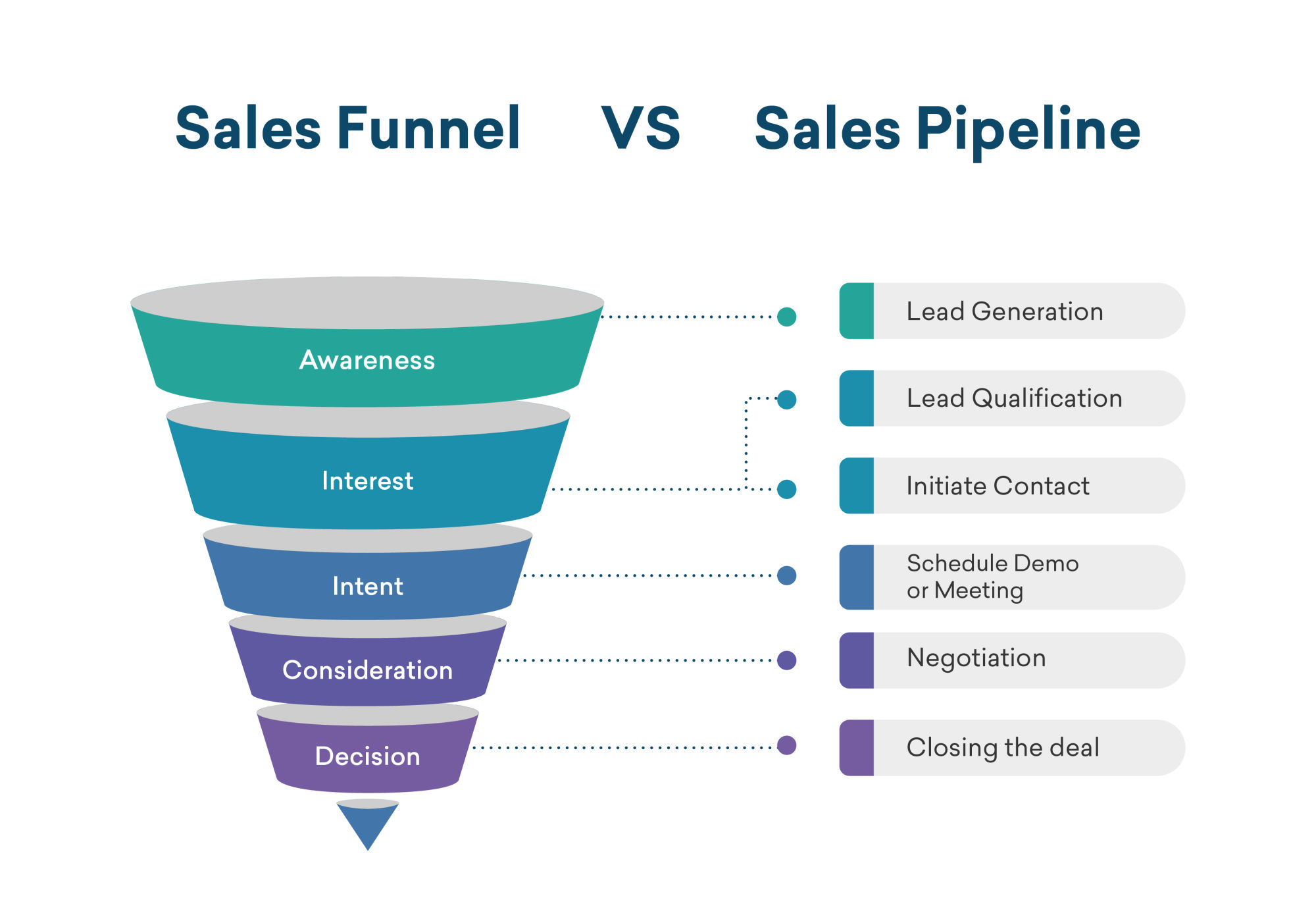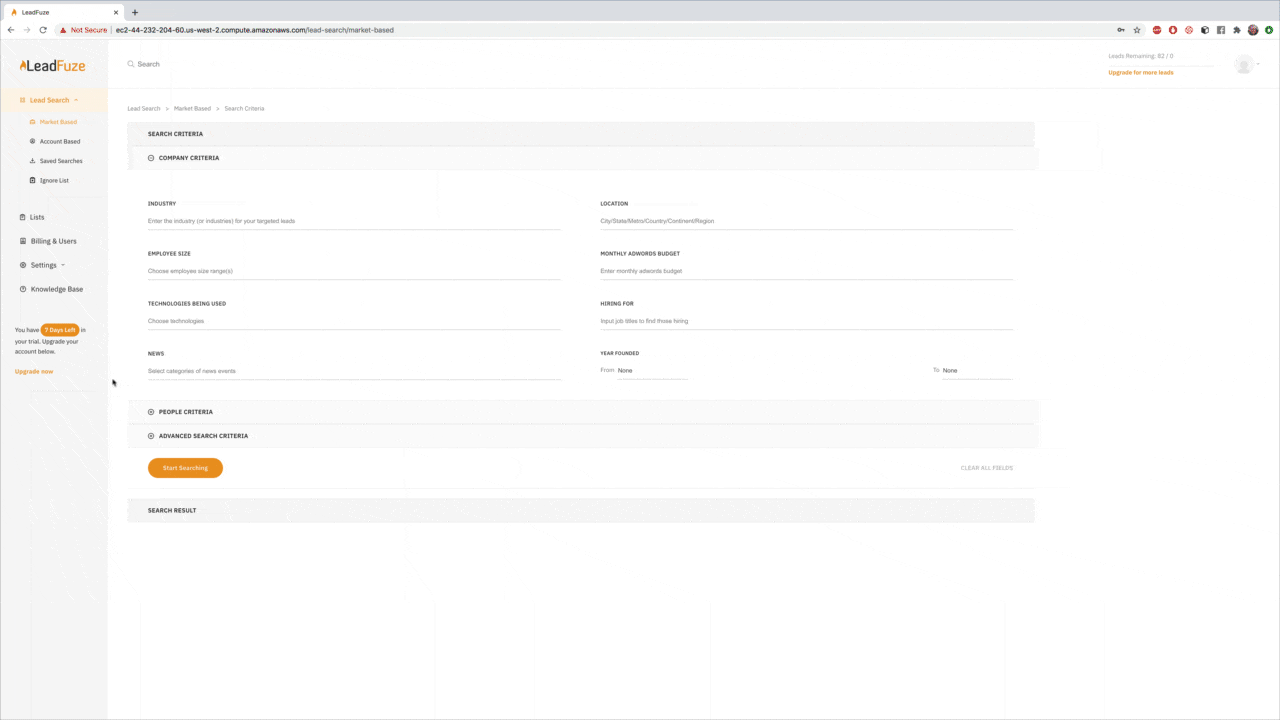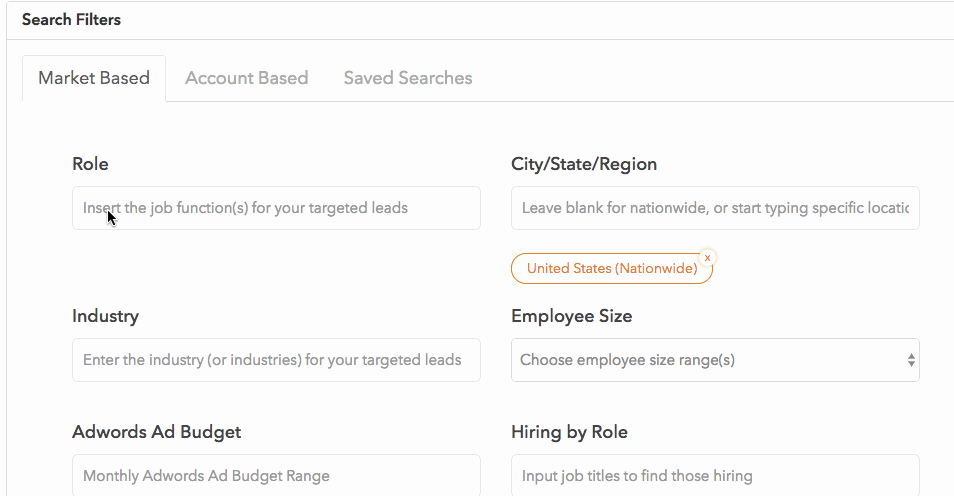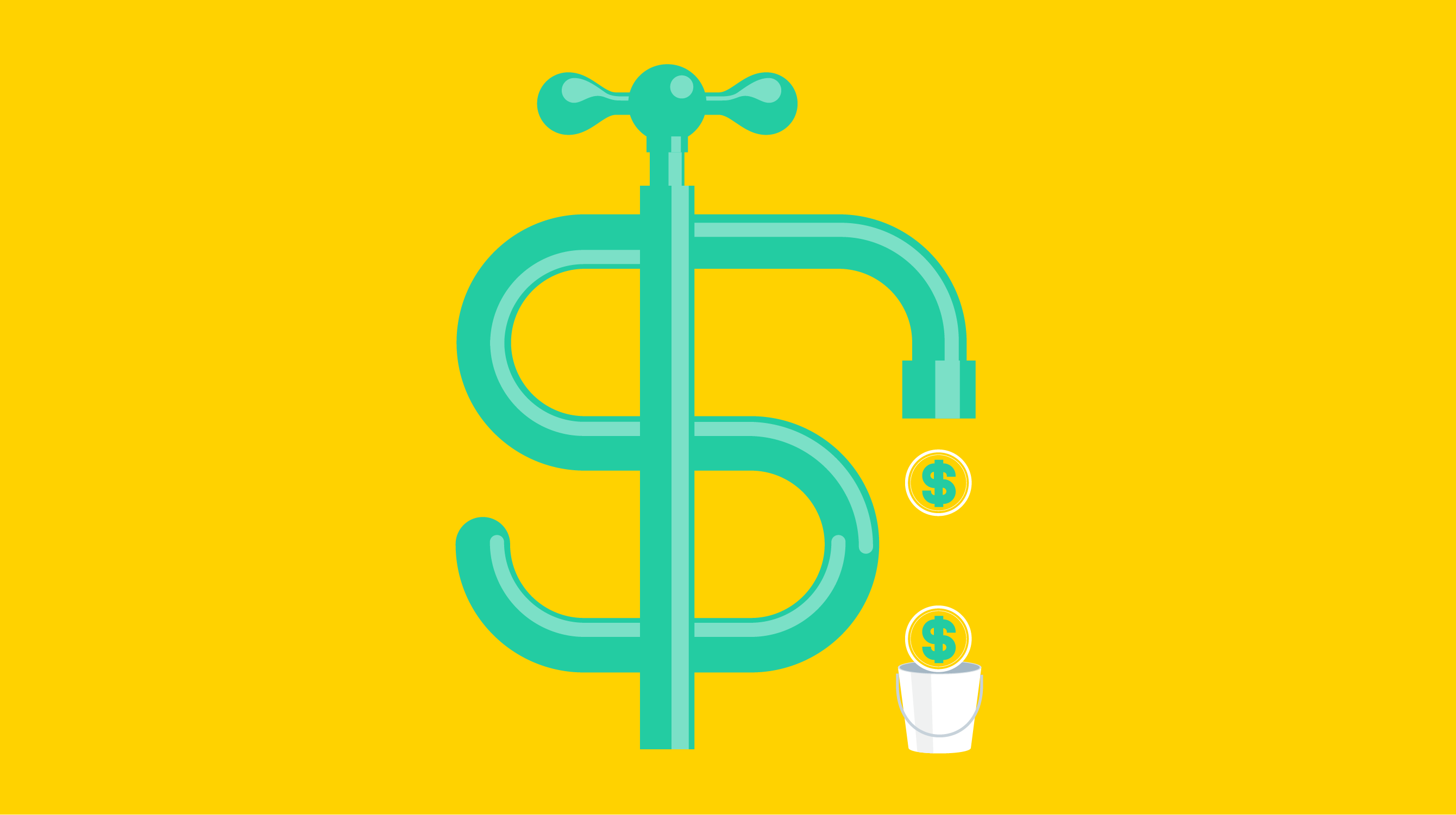What is a Sales Pipeline?
Sales pipeline is a series of steps leading from an initial conversation with the prospect to converting them into a customer. It helps you visualize where your potential buyers are in the process.
Sales pipeline are typically divided into three main stages:
- The prospecting phase, where sales representatives identify prospects and create interest in the product.
This is also known as generating a lead list or customer pipeline from which they can draw later on.
- The second stage is the qualification, this is where you convert your leads into potential customers who are most likely to buy your products.
- The third stage is the conversion or closing phase, which is when the salesperson closes the sale with a prospect.
Sales Pipeline Vs. Sales Funnel: What’s the Difference
People are always confused between a sales pipeline and a sales funnel, and that’s totally understandable.
Sales pipeline management is an ongoing process, which means it’s dynamic and can be adjusted depending on the situation.
A sales pipeline funnel is a container that captures leads as they move through a predetermined set of steps to turn them into pipeline revenue opportunities.
For example, if you generate 100 new potential customers who are interested in your product, they might not all be ready to buy right away. You have to do something to make them do it!
But you can create a sales pipeline for these potential buyers that include different levels of content and products to purchase over time as their needs change.
Generally, the difference between managing a sales pipeline and a sales funnel is that a pipeline is made up of potential customers who have not yet purchased, whereas a funnel has both those leads and the ones who actually bought your product.

5 Benefits of Building a Sales Pipeline
Building a sales pipeline is key to building more revenue opportunities. Here are five benefits of doing so.
1. Get a clear view of your progress
Sales pipelines help track potential leads and their stage of readiness to buy and helps you manage your time by only speaking with qualified prospects about a product or service at the appropriate stage in the process.
It allows you to see if there are any missing steps in your customer journey, or if there’s something someone hasn’t seen which might interest them more than they originally thought.
Sellers that are in the process of closing deals can see how many prospects they still need to call on, and have an understanding of what their next steps should be.
2. Shorten your sales cycle
It can show you where a lead is in the process and what they need to do next.
A pipeline can help with forecasting so that you know how much inventory or staff members are needed on hand for each step of the sales cycle.
3. Monitor your sales team progress
It gives you a visual representation of how they are performing, and what needs to be done to help them close more deals.
4. Focus on the right accounts
You can zero in on leads that matter to your company with a sales pipeline.
A typical sales team will only spend 15 minutes per day on each lead. But with a pipeline, you can easily see the leads that have already been touched and know what needs to be done next.
With this knowledge about your pipeline, you can better spend time on those who need it most.
A sales pipeline will also help automate follow-ups with prospects at just the right times.
5. Increase total sales volumes and closed deals
A pipeline will make it easier to see which leads need more attention so that you don’t waste time on those who have already been contacted and are not interested in what you offer.
As a result, you’ll be connected with the right people and close more deals.
7 Types of Sales Pipelines
There are 6 types of sales pipelines that you can create. You can choose from the following:
1. The General Sales Pipeline
This is the most popular sales pipeline example and is the one you will find in a typical sales process as it has all stages of an account’s journey.
It includes stages like prospecting, qualification, meeting, and close.
One of the reasons why it’s one of the most-used pipeline types is because it allows you to have a no-frills sales process. Everything will be moving smoothly and swiftly from start to finish.
It’d be like, the leads will come in, they’ll see your product or service, and they’ll purchase it.
2. The Marketing and Sales Pipeline
Perhaps you’re quite confused right now because you may think that a sales pipeline is only for the sales team.
Well, the marketing teams can also use a pipeline when they are looking to connect with prospects.
Moreover, this type of pipeline can help you bridge the gap between two teams (marketing and sales), and give them access to areas they perform best.
Pro Tip: This sales pipeline works best with automation.
3. The Customer Engagement Pipeline
This is the type of pipeline that focuses on customers and their needs.
It can help you in keeping your clients up to date on things, ensure they don’t encounter any issues, or check if they need any help or support.
With this pipeline, you can make your customers feel that the people in your team are warm and knowledgeable professionals.
4. The Re-Engagement Pipeline
This pipeline strategy can be used to reach out to past clients and ask them if they’d like to purchase your product again or reactivate services.
They might be only waiting for you to reach out to them so they can make a repurchase — and this sales pipeline type can help you with that.
5. Post-sale Pipeline
You successfully closed a deal — congratulations! However, it doesn’t just end there. I mean, your work isn’t done yet.
Depending on the type of business or industry you’re in, you may need a post-sale pipeline which will include stuff that needs to be done after the contract is signed.
You may need to provide training, ask for a referral, provide a service, deliver or implement a new product, or create and design a new product.
6. Profile-based Pipeline
Does your brand sell to varying customers? If you do, then a profile-based pipeline can help you sell to a specific buyer persona.
For instance, if your business is selling a product to enterprise and SMBs companies, you shouldn’t be using an identical selling process for both of them.
You need to have a unique pipeline for each one. It’s more like account-based marketing.
7. Opportunity Pipeline
An opportunity pipeline is an inventory of potential sales opportunities. The more your company has, the better chance you have for success and high revenue.
In opportunity pipeline management, you will have a growing list of potential buyers that are qualified to purchase your product or service.
But, just because you have their contact information doesn’t mean they’re going to buy what you sell them. It’s up to the salesperson and his/her team — whether inbound, outbound, or both — to help these prospects decide on which solution they want.
Whichever type of pipeline you want to build, it is important to make sure that your pipeline reflects the correct time frame for each stage in a lead’s journey through your company and the buying process.
5 Sales Pipeline Stages
To further understand how to manage sales pipeline, you need to learn about the different sales pipeline stages it includes, which are the following:
Stage 1: Lead/Idea
Again, depending on the sales pipeline CRM you’re using, your sales pipeline names may change. You can also change them yourself, as it’s much better to add action right into the beginning.
Differentiate between marketing leads (MQL) and sales leads (SQL). In marketing, there are two parts of the lead generation process:
1) Lead generation itself, where leads are generated through a variety of sources (from advertising to direct inquiries from leads). The goal here is to get contact information.
2) Lead nurturing. Leads are typically nurtured with automated marketing efforts. They’re then qualified according to their responsiveness, and if appropriate, contact info is forwarded to sales for a follow-up.
This is where we get sales leads.
And once the leads have entered the sales pipeline, the goal is to move them forward to the next stage (contacted leads).
Generating leads is important for your sales pipeline and LeadFuze can help you with that.
LeadFuze is a lead generation tool that helps you find new leads and nurture them.
It’s time to stop wasting your time cold-calling old customers and doing endless searches on the internet for contacts. It’s time to get out of this cycle, generate more leads, and spend your valuable time closing sales!
With LeadFuze, you can create targeted lists of prospects using our powerful search engine or by uploading a CSV file with all of your existing contacts. Then we will automatically send emails to those prospects at optimal times to convert more leads into paying customers.
You also have the ability to schedule follow-up calls directly from within the application so you never miss an opportunity again! The best part is that it’s all done for you — no manual work required!

Stage 2: Contact Made / Contacted
Our suggestion for this stage is for the naming convention to be named after the action task which should be performed. This automatically improves the likelihood of the lead pipeline to progress.
In this case, you can opt for “Define needs” as the stage name.
At this stage, your sales team should:
- Verify that the lead matches key targeting criteria
- Verify the lead’s likelihood to buy
Including this process in your sales pipeline flow significantly cuts back on wasted time, as it makes sure that the leads are sales-ready. No more wasting time on leads who are least likely to purchase.
This may not seem like a problem, but keep in mind that on average, only 27% of B2B leads sales teams are sales-ready. The rest are, to put it colloquially, a dead end.
And having a B2B sales pipeline flow will help you establish that right from the beginning.
Once that is verified, you can just drag and drop the account towards the next stage.
Stage 3: Needs discovered / Qualified
Again, naming conventions vary, and typically your stages are named after the tasks you’ve already done.
However, to really proactively advance the lead through the sales process, it’s much better to name stages after actions that should be taken.
In this case, the necessary action would be: “Send a proposal,” “Schedule a demo,” or similar.
To qualify leads and make sure that they are ready for your offer, you can use the BANT criteria to define:
- Budget (Does the lead have a budget, and what is their estimate?)
- Authority (Does the lead have the permission to make a deal with you, or should you contact someone else?)
- Need (Does the lead have a need your product can satisfy?)
- Timeline (Is there a definite timeline?)
If the lead satisfies all four criteria, you can proceed to the next stage. If they don’t satisfy the Authority criteria, they’re not the real lead.
You can either contact someone else (if the other criteria are satisfied) or remove them from the sales pipeline.
The goal in this stage is to spend time where it makes the most sense. This is to ensure the productivity of your sales team.
On average, only 13% of leads convert into opportunities, and this can take 84 days, but with a sales pipeline flow that’s dynamic and works with your sales team to advance your prospects towards the next stage until they’ve become customers, you can do it sooner.
Once the leads have been qualified and their needs have been discovered, it’s time for them to advance to the next stage.
Stage 4: Proposal made
Once your team is sure the lead is qualified, your flow should make it natural to progress towards proposals or offers.
Depending on your industry, this can mean a lead demoing your software, or simply approaching them with pricing customized to fit their needs.
The key to successful proposals is personalization.
If a customer approached your sales team with an accurate description of their needs, budget, and a timeframe within which they’re ready to commit to your solution, they’ve already given you a lot of information about their particular case.
Communication is key in Stage 4, so your proposal must show your sales representative’s understanding of the lead’s unique situation.
When assembling a proposal, make sure all aspects of the lead’s needs are covered and addressed.
Even though this has been addressed earlier in the sales process, it’s important to remind your leads of the benefits to successfully close a deal.
This is where you can also provide social proof, such as customer testimonials to solidify the lead’s decision.
Again, the proposal stage of the sales pipeline should come as a natural close to the previous communication. It should reflect everything previously discussed, as well as a clear definition of how your product addresses your lead’s challenges.
Stage 5: In negotiation
This is where Salesflare and Pipedrive custom sales pipeline templates differ.
Salesflare’s default Stage 5 is “Deal won” or “Deal lost.”
In reality, your sales process is more likely to reflect that of Pipedrive’s default setup:
When you’ve presented your proposal or offer to the lead you’re trying to convert, it’s important not to give up if the lead still needs your product.
The reason behind the most common negotiations is the budget. If you have leeway for accommodating the lead’s needs, negotiate a solution with them.
However, if you’re negotiating because the lead has been improperly qualified, it’s best to either revert them to the ‘Contact made’ stage where their needs can be assessed again, or drop them as a prospect entirely.
You can also make a separate stage in your sales pipeline flow for this kinds of leads.

How to Build a Sales Pipeline in 6 Steps
Excited to build your sales pipeline? Here are 6 sales pipeline management best practices you can use:
1. Define target ideal customer profile
List the characteristics of your target market and what type of person they are. Your target market is an extremely important component to successfully building pipelines with qualified prospects through targeted outreach, marketing campaigns, and sales pitches.
2. Collect information about your target market
Who are they? What do they want? How old are they, what gender, how much money do they make or have in their bank account? Know everything you can about them.
When you have a clear picture of your target market, it will be easier to create an effective outreach campaign.
You can also tailor content and messages to the expectations or needs that they may have to increase their likelihood of purchasing from your company.
LeadFuze offers a simple solution for collecting information about your target customer.
You don’t have to worry anymore because it’ll do all the work for you! With this tool, you will never have any problem finding out who your target audience is.
All you need to do is fill up some demographics like age, gender, or occupation. After that, it’ll help you with the rest by providing valuable insights on how they think and what they want from products or services based on their demographic profile!

3. Write your cold email template and scripts
Cold email templates can be found all over the internet and typically include a brief introduction of you or your company, why this particular product is relevant to their needs, and an actionable call-to-action (CTA) that will lead them down the funnel.
A cold email template is important for your sales pipeline because it enables you to generate as many leads as possible, which makes it easier for the sales team when they are following up with those prospects.
When writing scripts or cold email templates, be sure that your messaging is clear and concise – not too long-winded because this will just diminish any chances of them reading through the whole message.
4. Make the first contact to your leads
It’s always important to start by understanding the needs of your prospects so that you can tailor a message and an offer fit for them.
Do not forget about content marketing as it is one of the most effective ways to generate traffic, but also convert these people into cold email subscribers or blog readers who will, later on, become customers.
5. Update your sales pipeline
Updating your sales pipeline is an important step to make sure that you are on top of the game and to give your leads a sneak peek into what is going on.
This will also show them how serious you take their business which can end up in more sales opportunities for both parties involved.
6. Automate your sales pipeline to scale it
The more you automate your process, the less time-consuming prospecting will be and at the end of the day, this is what leads to higher revenue figures in your company’s business development department.
Automating your sales pipeline can help you in making sure that you will be able to handle any sort of volume and also in creating the right mix between prospecting and your current customer base.
Automate everything, even if it’s just a single email. You can do this with pipelines manager software like ActiveCampaign or Mailchimp or with CRM systems like Salesforce.
You can also use a SaaS CRM system like Close.io or Autopilot to make sure that you will be able to keep up with the latest marketing trends.

How to Analyze Your Sales Pipeline: 4 Metrics to Track
Once your sales pipeline management process is up and running, it’s time to do a sales pipeline analysis. Track your performance using the following metrics:
1. Pipeline velocity
This is a good sales pipeline reporting to see if your efforts at converting customers have been effective and how many deals close in the typical month or quarter.
2. Pipeline value
This will allow you to see if the deals that are in your sales pipeline have a higher or lower value than others, and also helps identify which ones should be prioritized for closing first.
3. Conversion rate per stage
This is important for understanding the health of your sales pipeline. It helps you see how effective your strategies in converting leads are at every stage.
This will help you determine which pipeline stage needs more attention or marketing efforts and allow you to see if any stages should be removed from your process.
4. The sales rep pipeline performance metric
This can help you track how each rep is performing in their pipeline. With this information, you’ll know what needs to be improved.
This will help you to identify which reps are closing more deals and should be used for higher priority leads, and can also tell you if a particular stage needs more work or marketing attention.
It’s one of the important pipeline reports that can help you look at the total conversion rate of your entire team’s efforts.
Conclusion
Building a sales pipeline is important because, without one, you will be unable to generate any revenue for your company.
In short, a good pipeline in business is the key to your success — and understanding how it works is the first step in improving it and increasing revenue.
Want to help contribute to future articles? Have data-backed and tactical advice to share? I’d love to hear from you!
We have over 60,000 monthly readers that would love to see it! Contact us and let's discuss your ideas!
